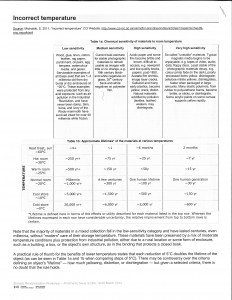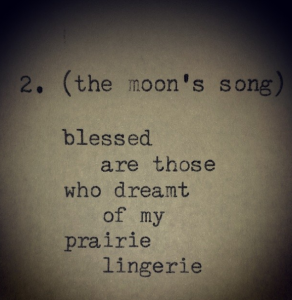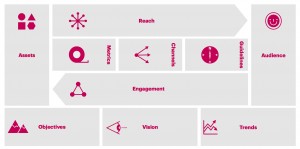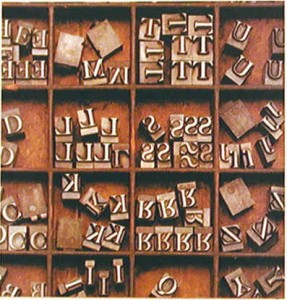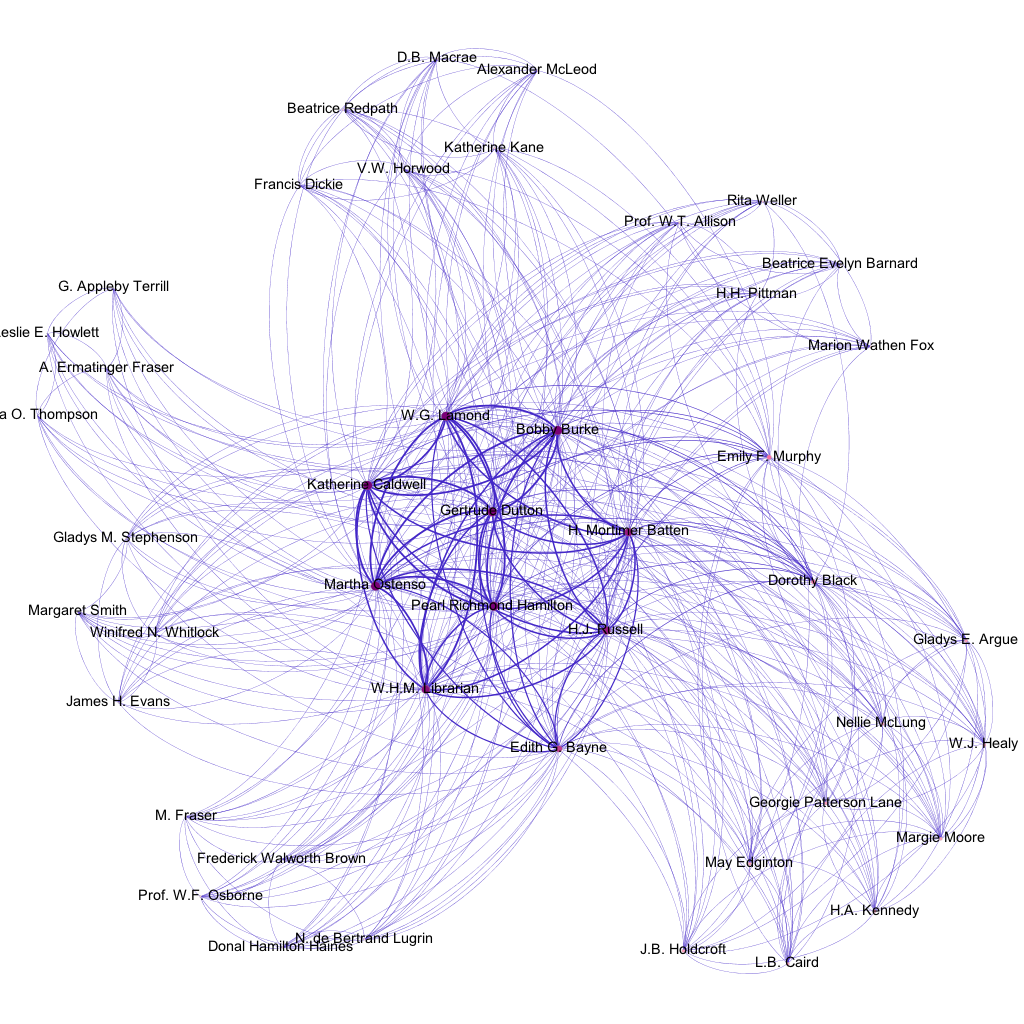Archives
Archive for May, 2014
May 23, 2014
Four Web Finds for Digital Humanists
Instead of sharing four separate Facebook or Twitter posts, I thought I would collect some recent discoveries of materials that might be of interest to the EMiC community and put them into one blog post. So here is my Friday sampler:
I will be writing more soon on the audio edition of Sepass Poems as I continue to correspond with Ann Mohs of Longhouse Publishing prior to the official launch. For now, check out the audio glossary that has been created to accompany the audio edition. It is a great reminder that paratext (or in this case perhaps a term like paranarrative would be more appropriate) should reflect the medium of the principal text or narrative. It seems fitting that the glossary for orally presented poems is an oral glossary, returning to the tradition of learning new terminology through listening and repetition.
Here is the link to the glossary: http://www.longhousepublishing.com/book-Sepass-Poems-Glossary.htm
For those collecting audio and video in its original form (i.e. magnetic media: floppy discs, cassette tapes, etc.), the Canadian Conservation Institute (CCI) has published S. Michalski’s “Incorrect Temperature” chart as a guide to how long different objects will last at different temperatures based on their vulnerability. The highest sensitivity group includes magnetic media and colour photographs, and various other types of paper (for those of us with large book collections) can be found under the other sensitivity groups. Technically I didn’t discover this online, but the workshop organizer who passed it on during a museum workshop took it from the CCI website. If you’re curious to know how long that copy of bpNichol’s First Screening is going to last in your basement, or what kind of decay rate your collection of rare chapbooks and Modernist periodicals have, this document is worth a glance. If nothing else, it is a reminder of why digitization is necessary for preserving literary works that have a finite lifespan in their original physical form.
For anyone in Halifax who is working on an edition and wants to tackle some basic graphic design work on their own, check out this Intro to Photoshop course offered by Ladies Learning Code (the organization is targeted at women, but men can take the courses, too). I have taken two Ladies Learning Code courses in the past (one for HTML and CSS, and one for JavaScript) and they were both very informative, hands-on, and well-taught. Plus they are very affordable! A Canada-wide organization, Ladies Learning Code offers workshops in many different cities, so sign up for their email newsletter if you want to know of relevant coding, Adobe, and Microsoft Office courses that are coming your way.
This last find is not as directly related to Modernism or editing, but it has filled my head with possibilities. Poet Adrian Sobol has created a digital chapbook by self-publishing poems on Instagram under the account “Selfies with the Moon.” Check it out here.
After thinking about digital strategies for engaging an audience with tools like social media, I am in love with Sobol’s idea! #crowdsourcing #instaeditions #hashtagannotations ? #bpNicholOnInstagram ?? It certainly is something to think about.
May 17, 2014
Tools from Post-Ac / Alt-Ac Careers: The Digital Engagement Framework
Since finishing my MA and deciding to pursue a career outside academia instead of a PhD, I have encountered plenty of discussions and discovered several resources that could fit just as well within academic projects in the humanities. As a Museum and Communications Coordinator for a non-profit heritage organization, issues surrounding collecting, archiving, and organizing information, cultural objects, and historical narratives are always present in my work. Many of these issues are related to how we can best engage an audience in these materials and narratives using digital platforms. This is the first of a few posts that I hope to write in order to share tools from my work outside academia that I feel would be useful to the EMiC community. Anyone else who has ideas and resources to share that bridge the divide between academia and post-ac / alt-ac careers should feel encouraged to do the same.
I attended two workshops at the Canadian Museums Association conference in Toronto this April, one of which was about incorporating digital strategies into project planning. The workshop was led by Jasper Visser, who travels the world to give talks on The Digital Engagement Framework. This framework is a tool that helps you decide which digital technologies will best achieve your goal and engage people in your project. The framework encourages users to map out who their audience is, what they can offer this audience, and what the audience can offer in return. The next steps involve planning how digital tools can be used to facilitate a mutually beneficial relationship between the project organizers and their audience. Visser has created an entire book on the topic that includes worksheets and case studies. It can be downloaded (along with the worksheet pictured above) from the digital engagement framework website.
I found the tool very useful for streamlining ideas about crowd-sourced projects that depend on audience contributions. Visser’s workshop asked participants to think past the initial engagement of an audience and also create a strategy that will retain an audience and cause an audience to be invested in a project. Since invested audiences need to feel that they are adding value to a project and that their efforts are recognized, the workshop included ample discussion on social media and how it can support crowd-sourced projects. The workshop also forced me to realize that, since only about 1 out of every 100 people remain interested in a project after initial engagement, targeting an audience 100 times the size of my ideal audience is a necessary first step in obtaining the participation levels I would like to achieve.
All in all, I think this resource is a useful tool for anyone planning a digital project that will use crowd-sourcing to obtain materials (such as an online edition that will ask for annotations from readers), for anyone who has a non-digital project that will require digital tools to engage with an audience (such as a textual edition that will be promoted through social media and other online platforms), or simply for anyone who has a project in mind and wants to take the first steps in considering how to get people interested in it– specifically in a world where digital interactions are not only the norm, but a necessity for generating a large and invested readership.
May 13, 2014
EMiC 2014-15 PhD Stipend Recipients
The Editing Modernism in Canada Project has awarded the following students PhD Stipends for 2014-2015. Congratulations to this year’s winners!
1) Michael Nardone
Concordia University
Project Title: PHONOTEXT.CA
Phonotext.ca is a project initiated for the creation of a comprehensive open-access digital index of sound recordings related to modernist and postmodernist Canadian poets and poetry. The site will index recordings in all available formats, document any relevant bibliographic information, list where recordings are physically located, and provide links to access recordings that have been made digitally available.
In addition to providing a platform for listening to Canadian poets and poetry, phonotext.ca will serve as an important tool for preserving and accessing phonotextual materials, acting as a hub to catalyze future research and critical study. Funds from Editing Modernism in Canada support developing the site’s indexing and metadata protocols, the initial compiling of resources, and outreach to acquire additional resources among communities of poets, scholars, researchers, librarians and archivists.
2) Carl Watts
Queen’s University
Project Title: Laura Goodman Salverson’s The Dove
In addition to works of autobiography and realist fiction, Laura Goodman Salverson published a little-known novel called The Dove (Ryerson Press, 1933), in which a group of Icelanders is kidnapped by corsairs and sold as slaves in Algiers. While much has been written of the arrangement of realism and romance that informs Canada’s modernist literature, The Dove is unique in that its peculiar historical romance registers a radical inversion of commonly expressed relationships between Europeans and non-Western peoples. It is for this reason that I am proposing a digital edition of the long-out-of-print novel. Based on the first edition as well as the novel’s typescript at Library and Archives Canada, this edition will also include an introduction and notes that draw from archival materials and critical work on Salverson’s corpus.
3) Graham Jensen
Dalhousie University
Project Title: The Canadian Modernist Magazines Project
The Canadian Modernist Magazines Project (CMMP) will focus its attention on the digitization and transcription of a limited selection of Canadian “little magazines” so that their constituent poems, essays, and editorials can be read, searched, and analyzed by scholars within EMiC’s Modernist Commons or using a variety of existing third-party digital humanities tools. Following the precedent set by similar projects—such as the Modernist Journals Project (U.S.A.) and the Modernist Magazines Project (U.K.)—the CMMP will attempt to digitize complete runs of two important Canadian magazines of the 1940s: Preview (1942-44) and First Statement (1942-45). Once these initial goals have been met, the CMMP will have established the online infrastructure and editorial processes necessary for the digitization and transcription of additional magazines. Following the initial funding period, Graham hopes to expand the CMMP through other grants or as part of a postdoctoral research position.
4) Alix Shield
Simon Fraser University
Project Title: Curating Digital Aboriginal Orature and Literature
This project will focus on the digitization, editing, and critical analysis of First Nations orature and literature, looking specifically at the collaboration between Chief Joe Capilano (Sahp-luk) and E. Pauline Johnson (Tekahionwake) that culminated in the text Legends of Vancouver (1911). The project will begin with the gathering of versions of the Legends text, and will then move to the digitization stage, where scans of the various editions will be ingested to EMiC’s Modernist Commons repository and web-based versioning platforms will be used to collate variant texts and produce visualizations that highlight exact instances of change across versions. Finally, the project aims to produce a digital scholarly edition of this collaboratively-authored text, and in doing so engage in the process of repatriation by creating an archival space that involves members of the Coast Salish and Mohawk communities and respects cultural codes and protocols.
May 12, 2014
TEMiC in Review: Transitions and Inspirations
Continuing with posts featuring feedback from TEMiC, Katrina Anderson— an MA student at Simon Fraser University– writes about why she recommends the training event to other humanities students:
Looking back on my experiences at last year’s Textual Editing and Modernism in Canada (TEMiC) summer institute, I have realized what an excellent training opportunity it was for someone just about to begin her first year as an MA student. In many ways, the coursework, seminar discussions, and afternoon workshops prepared me for the transition from undergraduate to graduate studies. The assigned readings that corresponded with the theme “Editing Modernism On and Off the Page” anticipated many of the readings that I would encounter in my first graduate seminars. These seminars, which focused on Print Culture and Digital Romanticism, integrated many of the same issues that were raised during the week at TEMiC. Having already discussed digital and textual editing practices with students and scholars in the EMiC community, I was able to speak and write about them with confidence in my graduate coursework. It was especially helpful to have been introduced to the work of John Bryant, whose fluid-text approach now somehow seems to make its way into every essay that I write.
Aside from providing a solid background in readings on textual and digital editorial theory, the summer institute also helped me to find my current research project. I am hoping to develop an edition of the short stories of Katherine Hale, and my experiences at TEMiC are largely responsible for the conceptualization of this project. My interest in Hale as an author comes out of the research that I did in preparation for the summer institute, and without the knowledge that I acquired at TEMiC (as well as the introduction to digitization methods I received at Digital Editing and Modernism in Canada [DEMiC] /DHSI in Victoria earlier in the summer) I would not have considered a digital edition as something that someone with a humanities background and limited technical skills would be able to develop. I know the almost daunting amount of work that goes into such a project, however what I learned at TEMiC and DEMiC. DEMiC/DHSI gave me the vocabulary and framework I needed to see this as a task someone with my level of training would be able to pursue.
For me, some of the most memorable moments from TEMiC 2013 came out of the afternoon workshops and guest speaker sessions. Getting hands-on experience with printmaking techniques such as screen and letterpress printing was a particular favourite. Listening to scholars speak about their current research was fascinating, and provided a perspective on the diverse array of work being done in digital humanities scholarship. And, of course, being in the audience as Frank Davey, Fred Wah, Sharon Thesen, Daphne Marlatt, and George Bowering read and discussed their works was a real treat.
I feel lucky to have been able to participate in this poetic and editorial event. I am especially grateful to the EMiC community, in particular to Karis Shearer and Dean Irvine, for organizing this training opportunity, and for providing a memorable send-off from my hometown as I made the move to pursue my MA degree.
May 5, 2014
On Using Tools and Asking Questions
I recently met up with fellow EMiC fellow Nick van Orden, along with a few other colleagues here at the University of Alberta, to discuss our shared experiments in Gephi, “an open graph viz platform” that generates quick and lovely network visualizations. Our meeting was in turn prompted by an earlier off-the-cuff conversation about the pleasures and challenges of exploring new tools, particularly for emerging scholars for whom work that cannot be translated into a line on the CV can often feel like a waste of time. We agreed that spending some time together puzzling over a tool of mutual interest might reduce the time investment and increase the fun factor.
During this first meeting the conversation somewhat inevitably turned to the question of why — why, when there is such a substantial learning curve involved, when it takes SO LONG to format your data, why bother add all? What does a new tool tell me about my object of study that I did not already know, or could not have deduced with old-fashioned analogue methods?
I offer here an excerpt from Nick’s reflection on this conversation, because it is perfect:
DH tools don’t provide answers but do provide different ways of asking questions of the material under examination. I think that we get easily frustrated with the lack of “results” from many of these programs because so much effort goes into preparing the data and getting them to work that we expect an immediate payoff. But, really, the hard intellectual work of thinking up the most useful questions to ask starts once we’re familiar with the program.
The frustration with lack of results, like the frustration with spending time learning something you won’t necessarily be able to use, is based on an instrumentalist approach to academic work that suggests two related things. First, it is, I think, a symptom of the state of the academy in general and humanities in particular. Second, it implies that DH tools should function like other digital tools, intuitively and transparently. I say these points are related because often the instrumentalist approach to scholarship develops into an instrumentalist approach to DH as itself a means for emerging scholars to do exactly the kind of CV-padding that learning a new tool isn’t. And therein lies the value of this “hard intellectual work.”
To illustrate, here is an image of one visualization I produced from Gephi.
This image shows the authors featured in each of the six issues of the magazine Western Home Monthly in which Martha Ostenso’s Wild Geese was serialized between August 1925 and January 1926. It reveals a few things: that there a number of regular feature-writers alongside the shifting cast of fiction and article contributors; that, in terms of authors, different issues thus interweave both sameness and difference; that Ostenso herself briefly constitutes one of those recurring features that characterizes the seriality of the magazine, even if a larger chronological viewpoint would emphasize the difference of these six issues from any others. None of these points are surprising to me; none of them were even, properly speaking, revealed by Gephi. They were, in fact, programmed by me when I generated a GDF file consisting of all the nodes and edges I wanted my network to show.
This image does a much better job of arguing than it does of revealing, because it is based on the implicit argument I formulated in the process of building said GDF file: that a magazine can be understood as a network constituted by various individual items (in this case, authors) that themselves overlap in relationships of repetition and difference. It can thus, as Nick implies, be understood as the result of a series of questions: can a magazine be understood as a network? If so, a network of what? What kinds of relationships interest me? What data is worth recording? What alternate formulations can I imagine, as I better understand what Gephi is capable of?
Work like this is slow, exploratory, and its greatest reward is process rather than product. It may eventually lead to something, like a presentation or a paper, that can show up on a CV, but that is not its purpose. The greatest value of the painstaking work of learning a new tool is this very slowness and resistance to the instrumentalist logics of DH in particular and academic work in general.
What is your experience with learning new tools. What tools have you experimented with? How have you dealt with your frustrations or understood your successes? Do you think of tools as answering questions or helping you to pose better questions? Or as something else entirely?
